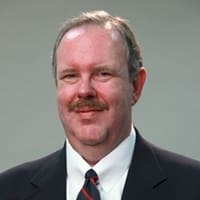Back in the day when I was actively selling HR services and technology to talent acquisition leaders, I would tell my team that I could decipher the great TA leaders from the mediocre ones with one glance at their resumes. If the first line of their resume read, “supervised a team of 120 recruiters in 12 countries…,” they were mediocre. If it read, “supervised a team that managed the hiring of more than 5,000 employees…,” they were far superior. The difference was that one focused on the empire-building capabilities of the executive, while the other focused on the business results. Truth the is that part of the recent trend of “insourcing” areas, like benefits administration and recruiting, are more a function of empire building than the lack of available high-quality providers. But that is all going to have to end.
Why does it have to end? Because the volatility of the past 15 years has taught us that you never know what is coming next. Between banking crises in 2008 (and now), global pandemics, hiring shortages, and booms and busts, the only thing that we can be certain of is uncertainty.
At the HRO Today Forum North America earlier this month, in my opening at the start of the conference, I took the dangerous path of predicting some of the key challenges for HR in the coming decade. In my slides, I had a picture of an opaque sky, demonstrating the lack of visibility for HR leaders. How can you plan for five years from now when you cannot see one quarter ahead? If COVID-19 did nothing else, it taught a cruel lesson about the power of unpredictable occurrences. I think all the executives who lived through it will have a hard time shaking off the trauma and uncertainty of that event. The following slide was the structural skeleton of a building, and I told the crowd of very senior HR leaders that given all the volatility, “fixed” infrastructure was their only bad decision. And, in fact, fixed infrastructure is ridiculous in the modern HR department.
I am not suggesting that you need to fully outsource HR. That movement led by companies such as Exult burned out. HR can be outsourced by departmental functions, and some are easier than others such as recruiting, payroll, or benefits administration. Human resources business partners, for instance, should probably not be outsourced given the nature of what a “business partner” is supposed to represent.
I am also not suggesting that those aforementioned departments have to be outsourced in full. I am suggesting that you need a combination of a retained organization and an outsourced organization that has a built-in “shock absorber” when you need to upsize or downsize. This move to “variable” infrastructure is inevitable in volatile times. Many of the companies that heavily “insourced” are now having wholesale layoffs of hundreds of HR professionals. I do not want to deal with the various biased and narrow-minded arguments about outsourcing. Yes, there have been a few bad outcomes, but very few. HRO Today has the largest database of customer satisfaction surveys in the HR trade media. We know when things work and when they don’t. Bias is bias and data is evidence. We have evidence that 99% of outsourcing deals are successful.
The outsourced providers can “variablize” their staff in ways that internal firms cannot. They can flex up and flex down more nimbly as that is what they sell as part of their value proposition. They have processes and technology to allow them to more effectively manage their internal bench than an insourced organization. Fixed infrastructure is your only bad decision.
As an HR leader, you need to own the strategy of HR, but there are numerous execution models. A fixed, inflexible execution model is foolish. In fact, another word for this flexibility in the modern corporate lexicon is “agility,” and if you aspire to be agile, you have to manage your infrastructure in a way that allows you to do just that. The next decade will probably be as volatile as this one so make sure you have designed your HR organization to thrive a volatile environment.
Elliot S. Clark
CEO












